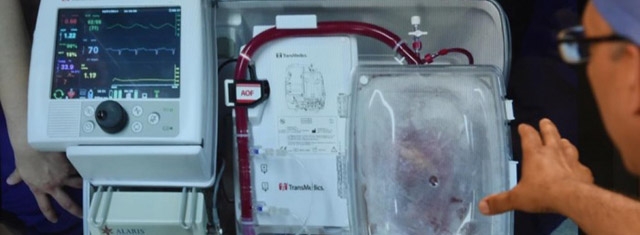Health
FIRST TRANSPLANT WITH NON-BEATING HEART IN CAMBRIDGESHIRE
60-YEAR-OLD PATIENT RECOVERING WELL

USPA NEWS -
The first heart transplant using a non-beating heart was successfully carried out in Europe, the British press reported on Friday.
The surgery was performed at the Papworth Hospital in Cambridgeshire. Donor hearts are usually from people who are brain-stem dead, but whose hearts are still beating. In this case, the organ came from a donor whose heart and lungs had stopped functioning, so-called circulatory death.
The patient, a 60-year-old man who suffered a heart attack in 2008, is now recovering well.
The patient, a 60-year-old man who suffered a heart attack in 2008, is now recovering well.
Medical teams at Papworth Hospital spent more than a decade working on procedures to enable the landmark operation before performing the transplant earlier this month. Led by consultant surgeon Stephen Large, the work means that far more hearts can potentially be used to save patients´ lives. “The use of this group of donor hearts could increase heart transplantation by up to 25% in the UK alone,“ he said. Until now, hearts used in transplant operations have come from donors who are declared brain-stem dead, but still have blood pumping around their bodies. For the latest operation, surgeons took a heart from a donor whose heart had stopped beating, in what is termed circulatory death.
The breakthrough involved the use of new techniques to restart the unbeating heart inside the donor minutes after death, and then monitor its function to ensure it was in good enough condition to transplant.
Doctors used ultrasound to assess the function of the restarted heart for 50 minutes before approving it for transplantation. They then removed it from the donor, placed it in an “organ care system“, also known as a heart-in-a-box machine, which perfused the organ with blood and nutrients and kept it beating for three hours until the operation went ahead.
Doctors used ultrasound to assess the function of the restarted heart for 50 minutes before approving it for transplantation. They then removed it from the donor, placed it in an “organ care system“, also known as a heart-in-a-box machine, which perfused the organ with blood and nutrients and kept it beating for three hours until the operation went ahead.
more information: https://www.gentlemandriverphotography.uspa24.com
Liability for this article lies with the author, who also holds the copyright. Editorial content from USPA may be quoted on other websites as long as the quote comprises no more than 5% of the entire text, is marked as such and the source is named (via hyperlink).





